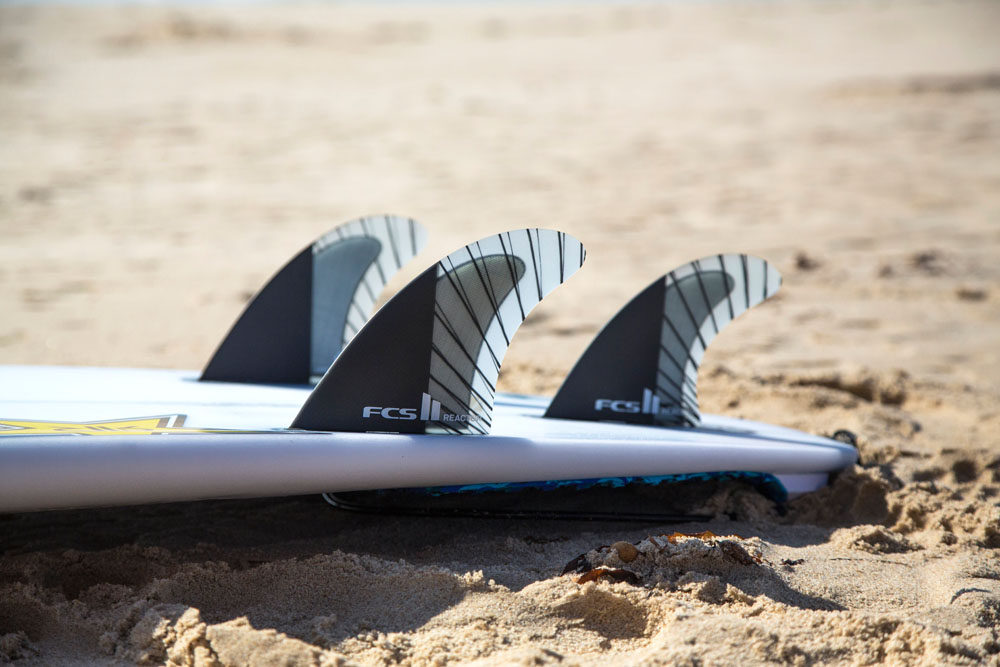Surf drifts: the little things that make all the difference

When you start surfing, you think of the board, the wax and the wetsuit. But rarely... fins. And yet these fins attached to the underside of the board are the hidden heart of piloting. What if we told you that changing a drift could totally transform the way you surf?
What is the point of drift?
Imagine a car without a steering wheel. That's what a board would be like without daggerboards. They allow you to stay the courseof carver (making sharp turns), from pick up speed and above all do not drift sideways on the wave. Without them, every wave would be a rodeo.
Single, twin, thruster, quad... what are they?
There are several configurations, each with its own vibe:
- Single fin A single fin. Old school style, fluid glide, ideal for longboards and wide turns.
- Twin fin Two drifts. Speed and freedom, but less control. Perfect for soft waves.
- Thruster (3 drifts) The modern standard. Balance between speed, manoeuvrability and stability.
- Quad (4 drifts) : Grips in hollow sections, excellent for barrels.
- 5 purposes ? A personalisation option. You choose 3 or 4 depending on the conditions.
Form counts (a lot)
Each drift has its own templatehis sizeand its flex (stiffness). A softer daggerboard will be tolerant, perfect for beginners. A rigid centreboard, on the other hand, offers responsiveness but requires more control. It's a bit like choosing between rollerblades and racing skates.
What beginners don't know (yet)
Changing drifts can :
- turning a soft board into a fast car,
- improve your turns without changing your shape,
- adapt to the waves of the day (hollow, soft, powerful...).
And bonus: some excesses are recycledmade in algaein carbonor even in fishing nets recovered. A better, more responsible way to glide.
In conclusion
Drift is a bit like spices in a dish. They're not everything, but without them, it lacks flavour. So next time you're waxing your board, take a look under the deck: those little fins have a lot to say.

